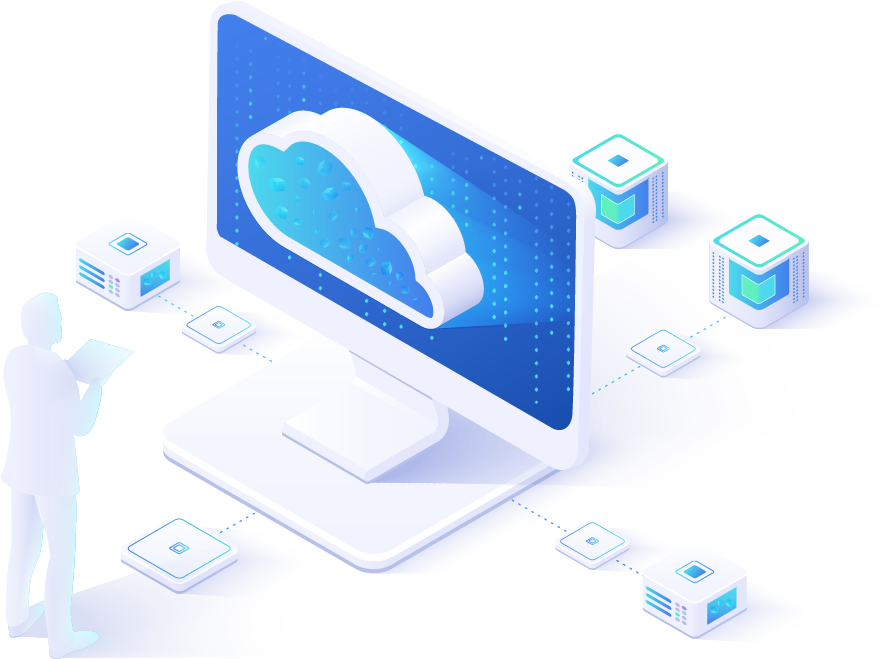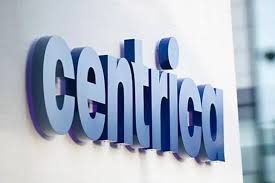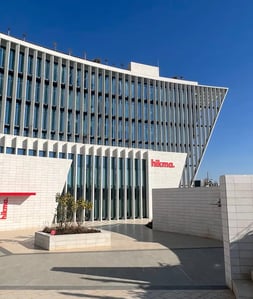Cerillion plc (LON:CER) has announced its interim results for the six months ended 31 March 2025.
Billing, charging and customer relationship management software solutions provider
Group remains on track to deliver financial targets
| Results | H1 2025 | H1 2024 | Change |
| Revenue | £20.9m | £22.5m | -7% |
| Recurring revenue in period1 | £8.2m | £7.6m | +8% |
| Back-order book as at 31 March 20252 | £50.2m | £47.1m | +7% |
| Back-order book as at 30 April 20253 | £56.5m | £45.8m3 | +23% |
| Adjusted EBITDA4 | £10.0m | £11.0m | -9% |
| Statutory EBITDA | £9.9m | £10.9m | -9% |
| Adjusted EBITDA margin | 47.7% | 48.9% | -120 bps |
| Adjusted profit before tax5 | £9.3m | £10.5m | -12% |
| Statutory profit before tax | £9.3m | £10.4m | -11% |
| Adjusted basic earnings per share6 | 23.9p | 27.6p | -13% |
| Statutory basic earnings per share | 23.8p | 27.3p | -13% |
| Dividend per share | 4.8p | 4.0p | +20% |
| Net cash | £31.2m | £26.6m | +17% |
Financial
· Revenue decrease of 7% to £20.9m (H1 2024: £22.5m), largely driven by the weighting of expected licence renewals/extensions shifting to H2 2025, compared to FY 2024 when the majority of renewals/extensions occurred in H1
· Recurring revenue in period1 up 8% to £8.2m (H1 2024: £7.6m), mainly reflecting higher support and maintenance revenue
· Back-order book up 7% to £50.2m2 at 31 March (31 March 2024: £47.1m) and up 23% as at 30 April 2025 to £56.5m3 (30 April 2024: £45.8m)
· Lower first-half profitability mainly reflected lower revenue, but adjusted EBITDA margin remained strong at 47.7% (H1 2024: £48.9%)
· New orders 3% lower at £19.6m (H1 2024: £20.2m)
· New customer pipeline7 up 3% to £261m (H1 2024: £254m)
· Balance sheet remains strong, with net cash up 17% to £31.2m (31 March 2024: £26.6m)
· Interim dividend up 20% to 4.8p (H1 2024: 4.0p)
Operational
· Major new five-year contract, worth $11.4m, signed in January 2025 with a major national telecoms operator in Armenia, covering fixed, mobile, broadband and TV services.
· £5.4m term renewal agreed in March 2025 with a major European customer.
· Another major European customer is to use Cerillion’s software to support the migration of its substantial, newly-acquired, tier-1 customer base. Services framework agreement worth c. £8m, signed post period-end for the implementation, with major licence extension to follow.
· New implementations continued to progress well:
o Virgin Media Ireland: initial delivery phases have been completed and customer migration is on track to commence in July;
o Connectivity solutions provider in Southern Africa: customer migration is on track to complete in July.
· New features launched in Cerillion 25.1:
o New Promotions Engine gives commercial teams the ability to build and deploy highly targeted campaigns faster and more efficiently;
o GenAI supported intelligent assistants automate billing queries and assist with the construction of new promotions.
· The Board believes that the Group is well-positioned to deliver its full year targets, supported by its strong back-order book and new business pipeline.
Louis Hall, CEO of Cerillion plc, commented:
“The business has continued to trade well, winning a major new customer, increasing the back-order book and developing the new customer pipeline. Just after the period-end, we signed the first part of what we expect to be one of our largest deals to date, once the licencing element is concluded. This project is to facilitate the migration of an existing European customer’s newly acquired customer base onto our product and platform. It further validates our offering as the customer chose to move its new customer base to Cerillion’s SaaS-based platform instead of remaining with the incumbent tier-1 provider.
“Based on new orders achieved to date and current trading, we believe Cerillion is well-placed to deliver market expectations for the full year and beyond. We continue to view long-term prospects with confidence.”
1 Recurring revenue includes support and maintenance, managed service, Skyline and third-party hardware and hosting revenue reported in the period.
2 Back-order book of £50.2m consists of £40.6m of orders contracted but not yet recognised plus £9.6m of annualised support and maintenance revenue. It is anticipated that c. 45% of the £40.6m of orders contracted but not yet recognised as at the end of the reporting period will be recognised within 12 months from 31 March 2025.
3 As at 30 April 2025, back-order book had increased to £56.5m, consisting of £46.9m of sales contracted but not yet recognised plus £9.6m of annualised support and maintenance revenue. It is anticipated that c. 45% of the £46.9m of orders contracted but not yet recognised as at the end of the reporting period will be recognised within 12 months from 30 April 2025. Includes a back-order comparative as at 30 April 2024.
4 Adjusted EBITDA is a non-GAAP, Company-specific measure, which is earnings excluding finance income, finance costs, taxes, depreciation, amortisation and share-based payment charges.
5 Adjusted profit before tax is a non-GAAP, Company-specific measure, which is earnings excluding taxes and share-based payment charges.
6 Adjusted earnings per share is a non-GAAP, Company-specific measure, which is earnings after taxes, excluding share-based payment charges divided by the average weighted number of shares in the period.
7 New customer sales pipeline is the total, unweighted value of all qualified sales prospects.
CHAIRMAN AND CHIEF EXECUTIVE OFFICER’S REPORT
Overview
First-half revenue of £20.9m was 7% lower than the same period last year and principally reflects the anticipated shift in weighting of customer extensions and renewals to the second half. In the last financial year, by contrast, the majority of renewals and extensions occurred in the first half. Based on the new contracts achieved to date and expected contract signings, the Company remains on track to meet consensus market forecasts for the current financial year and beyond.
Recurring revenue2 continued to grow, up by 8% over the first half to £8.2m (H1 2024: £7.6m). Adjusted profit before tax3 was 12% lower at £9.3m (H1 2024: £10.5m), which mainly reflected the decrease in total revenue. Nonetheless, the adjusted EBITDA margin remained robust at 47.7% (H1 2024: 48.9%) and the Company continued to generate strong cash flows, with improved cash conversion. Net cash at 31 March 2025, after payment of dividends, was up by 17% to £31.2m (31 March 2024: £26.6m).
Total new orders were 3% lower than the prior period at £19.6m (31 March 2024: £20.2m), however, the new customer sales pipeline stands at a very healthy £261m, a 3% increase (31 March 2024: £254m). The back-order book6 closed higher, up 7% to £50.2m at 31 March (H1 2024: £47.1m). Following the recent signing of a c. £8m implementation services agreement with an existing, major European customer, the back-order book at 30 April 20257 increased by 23% to £56.5m (30 April 2024: £45.8m). We expect to sign a substantial licence extension with this same customer. Once signed, the combined deal value of these agreements is expected to count amongst our largest new deal values.
We continued to develop our resources across our main operating bases in the UK, Bulgaria and India, and expanded our regional sales presence to support our on-going expansion strategy.
Despite recently unsettled global trading conditions, our trading backdrop remains favourable and we continue to see strong market demand for our product-focussed, SaaS solutions. Investment in enterprise software delivers significant revenue, operational and efficiency benefits to telcos, enabling them to leverage better returns on existing network infrastructure investments. Our ‘out-of-the-box’ product provides distinct advantages as it is a more cost effective and flexible solution compared to traditional bespoke solutions. This helps to underpin our confidence in the Company’s future growth prospects.
Looking ahead over the balance of the current financial year, we expect a stronger performance in H2 than in H1 and remain confident of delivering consensus market expectations for the financial year and beyond. Our view is based on continuing successful execution, the robust back-order book, closure of anticipated term renewals and extensions as well as our strong new business pipeline.
Financial Overview
Revenue for the six months ended 31 March 2025 decreased by 7% to £20.9m (H1 2024: £22.5m). This mainly reflects the reduction in licence revenue recognised against a strong comparator in 2024, when the majority of renewals/extensions occurred in the first half. This financial year, we anticipate a heavier weighting of licence renewals/extensions in the second half.
The mix of revenue shifted significantly towards Services revenue, which rose by 24% period-on-period to £10.3m, or 49% of total revenue (H1 2024: £8.3m and 37% of total revenue). Software1 revenue at £9.6m accounted for 46% of total revenue (H1 2024: £13.2m and 59% of total revenue). Other1 revenue amounted to £1.0m or 5% of total revenue (H1 2024: £1.0m and 4% of total revenue) and included the re-selling of third-party hardware, hosting fees and rebillable expenses.
Despite lower Software revenue, the gross margin was slightly higher than in the prior period at 80.6% (H1 2024: 80.4%). This mainly reflected improved operational efficiencies, which led to an increase in day rates achieved on key implementation projects.
Existing customers (those customers acquired at least 12 months before the end of the reporting period) accounted for a very high proportion of the Group’s revenue and generated 98% of total revenue in the period (H1 2024: 89%).
Recurring revenue in the period2 grew by 8% to £8.2m (H1 2024: £7.6m) and comprised 39% of the Group’s revenue (H1 2024: 34%). The rise reflected increased uptake of support and maintenance by existing customers as well as fee increments.
Operating expenses of £8.1m remained broadly consistent period-on-period (H1 2024: £8.1m). Increases from higher headcount, depreciation, amortisation and inflation were offset by favourable foreign exchange, favourable headcount mix and higher capitalisation of development costs.
Adjusted earnings before interest, tax, depreciation and amortisation (“EBITDA”), which excludes share based payment charges, decreased by 9% to £10.0m (H1 2024: £11.0m). Statutory EBITDA decreased by 9% to £9.9m (H1 2024: £10.9m).
Adjusted profit before tax3 decreased by 12% to £9.3m (H1 2024: £10.5m) and adjusted earnings per share4 was 13% lower at 23.9p (H1 2024: 27.6p). Statutory profit before tax decreased by 11% to £9.3m (H1 2024: £10.4m), and statutory earnings per share decreased by 13% to 23.8p (H1 2024: 27.3p).
The balance sheet remains strong. Net assets rose by 21% to £51.6m as at 31 March 2025 (31 March 2024: £42.5m).
Cash Flow and Banking
Net cash at 31 March 2025 increased by 17% to £31.2m (31 March 2024: £26.6m), with no debt in either period. Net cash generated from operations in the period increased to £7.0m (H1 2024: £5.3m).
Development costs of £0.9m were capitalised in the period (H1 2024: £0.6m) after investment to further enhance the Company’s intellectual property.
Free cash generation in the period was £5.9m (H1 2024: £4.7m) principally reflecting lower investment in working capital due to the lower software revenue recognised, partly offset by lower profit and higher capex. Cash generated in the period was partly utilised to pay the final dividend of £2.7m (H1 2024: £2.4m) in respect of the year ended 30 September 2024.
Dividend
The Board is pleased to declare an increased interim dividend of 4.8p per share (H1 2024: 4.0p), a 20% rise year-on-year. The interim dividend will become payable on 20 June 2025 to shareholders on the Company’s register as at the close of business on the record date of 30 May 2025. The ex-dividend date is 29 May 2025.
As previously stated, the Board aims to distribute between a third to a half of the Group’s free cash flow as dividends each year, subject to the Group’s performance and the Board’s assessment of the trading environment.
Operational Overview
We signed a major new customer contract worth $11.4m over five years in January 2025 with a major national telecoms operator in Armenia. We are installing our BSS/OSS5 software to support over one million B2B and B2C customers across fixed, mobile, broadband and TV services. The revenue benefits from this new win are expected to come through meaningfully in the second half of the current financial year, and we see scope for this new relationship to expand further over time. We also agreed a £5.4m term renewal in March 2025 with an existing European customer, and after the period-end, closed a c. £8m implementation services contract with another key European customer. This major contract extension provides the services framework for the migration of a recently acquired, tier-1 customer base onto our BSS/OSS platform. We expect to sign a second, substantial contract in due course, which will cover term licensing, maintenance, managed services and Evergreen software updates for this new customer base. The selection process was rigorous, involving external consultants and all key business stakeholders. Our solution replaces that of one of the largest operators in the BSS/OSS space, which we see as providing further important validation of our product and ‘as a service’ strategy.
We continued to invest in R&D, releasing new features and functionality improvements twice a year. Our Evergreen programme enables customers to remain up to date with the latest enhancements, with updates implemented on a regular basis as soon as new product releases become available. Its take-up is increasing as more customers embrace the full Software-as-a-Service model. AI is a particular focus in our R&D programme, and the release of Cerillion 25.1 in the first half introduced a set of new AI-powered intelligent assistants that streamline both our customers’ and their end-customers’ experience:
· Bill Intelligence – uses GenAI to automatically compare an end-customer’s latest bill with their previous one, delivering clear, natural-language explanations for any differences through all engagement channels. This enables a more proactive approach to addressing bill variations.
· Sales Assistant – uses GenAI to enhance the buying experience of a teleco’s end-customer. The end-customer can describe in natural language what they need and the system intelligently selects the best-match products, automatically populating the shopping cart and generating a quote for acceptance.
· Promotions Assistant – uses GenAI-powered natural language and image recognition to help telecos to build new promotions in seconds.
These new tools are designed to reduce complexity for telecoms providers and their internal teams. Cerillion 25.1 includes a powerful, new Promotions Engine, which is designed to help telcos to increase revenue through dynamic promotional campaigns, based on a wide range of customer behaviours and triggers, such as frequent top-ups, consistent monthly spending and usage patterns, following an “if this, then that” pattern. Traditional campaign systems often lack the real-time integration to deliver dynamic and timely offers. Cerillion’s new Promotions Engine addresses this.
Outlook
Prospects remain very promising and the business is well-placed for continuing progress. The market opportunity remains significant and the commercial and operational advantages to our ‘productised’ and ‘as-a-service’ approach are compelling. The business remains highly differentiated against the other providers in the marketplace.
The Company’s balance sheet is very strong, with no debt and significant net cash. This provides a strong platform to support Cerillion’s continued growth and development.
Results for the year are expected to be second-half weighted and we believe that the Company remains well-positioned to deliver market forecasts for the full year and beyond. This is based on new orders signed to date and the strong new business pipeline, which includes further licence extensions. We continue to view long-term prospect very positively.
| Alan Howarth Chairman | Louis Hall Chief Executive Officer |
Notes:
1 Software revenue is made up of licence, support and maintenance, managed service and Skyline revenue. In the prior period, third-party licence revenue was reported within Other revenue. In order to give a clearer view on the Group’s performance, and to be consistent with the definition used for FY24 reporting, third-party licence revenue is now reported within Software revenue. The prior year comparatives have been updated to reflect this change.
2 Recurring revenue includes support and maintenance, managed service, Skyline and third-party hardware and hosting revenue reported in the period.
3 Adjusted profit before tax is a non-GAAP, Company-specific measure which is earnings excluding taxes and share-based payment charges.
4 Adjusted earnings per share is a non-GAAP, Company-specific measure which is earnings after taxes, excluding share-based payment charges divided by the average weighted number of shares in the period.
5 BSS/OSS; in telecommunications, this refers respectively to business support systems and operating support systems.
6 Back-order book of £50.2m consists of £40.6m of orders contracted but not yet recognised plus £9.6m of annualised support and maintenance revenue. It is anticipated that c. 45% of the £40.6m of orders contracted but not yet recognised as at the end of the reporting period will be recognised within 12 months from 31 March 2025.
7 As at 30 April 2025, back-order book had increased to £56.5m consisting of £46.9m of sales contracted but not yet recognised plus £9.6m of annualised support and maintenance revenue. It is anticipated that c. 45% of the £46.9m of orders contracted but not yet recognised as at the end of the reporting period will be recognised within 12 months from 30 April 2025.
8 New customer sales pipeline is the total, unweighted value of all qualified sales prospects.









































